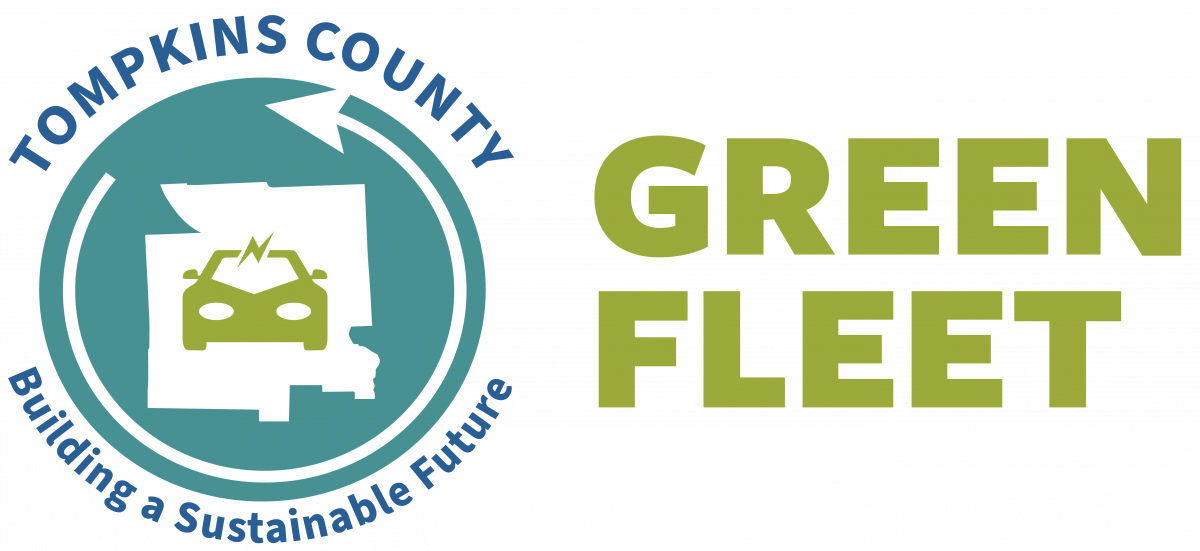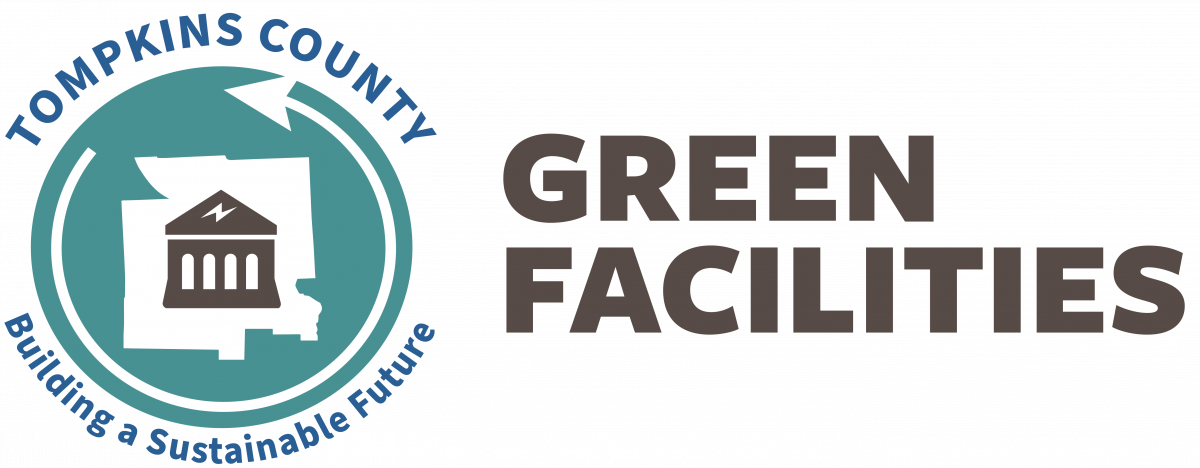
Planning for County Operations
The Tompkins County Energy Strategy was updated in 2019 to provide vision and leadership to move both County government operations and the overall community toward achieving net-zero emissions. The strategy provides a coordinated approach to integrating sustainable practices into Tompkins County government operations. Tompkins County has been working to implement both sides of the strategy, some key areas and accomplishments on the internal side are listed below. To learn more about our county-wide efforts visit the Businesses Energy Advisors page or our Sustainability page.

Tompkins County has made a commitment to replace and manage all county vehicles to reduce greenhouse gas (GHG) emissions, and total electricity, gas and diesel used. The legislature adopted an update to its Green Fleet Policy in early 2022. Implementing this policy means choosing the most electrified vehicle option available for a department’s intended use. The county currently has over 30 electric vehicles in its fleet, which are used by a wide variety of departments. By electrifying Tompkins County’s fleet, the county is reducing its reliance on fossil fuels and decreasing it’s GHG emissions. Pictured to the right is the County’s first E-Transit van used by the Facilities Department. By the County using electric vehicles every day, the hope is that employees and community members will become more familiar with electric vehicles and thus encouraged to electrify their personal vehicles.

Green Facilities is Tompkins County’s initiative to reach net-zero for all county buildings. A partnership with Johnson Controls Inc. has been forged to achieve this goal in a three-phase project. The project will focus on making Tompkins’s County Facilities energy efficient by updating insulation, lighting, heating, and cooling technologies, while also transitioning away from fossil fuels to electrification of building systems. Phase One is projected to begin in the Fall of 2022 and will focus on LED lighting upgrades, weatherization, water conservation, geothermal, and more. Many of the technologies Tompkins County is implementing can be used on your own home.

Tompkins County is in a period of transition of heating with natural gas in many of our facilities to heating and cooling with electricity. This will reduce our reliance on fossil fuels because all electricity used by Tompkins County’s facilities is 100% renewable. The County’s renewable electricity comes from a variety of sources. The first is from hydroelectric power. The County has had a long-term power purchase agreement (PPA) with Gravity Renewables since 2016 to purchase electricity from a refurbished hydroelectric project in Waterloo, NY. This PPA extends to at least 2036, with the possibility for renewal after that date. This covers about 63% of the County’s electricity usage. The county also has onsite solar at seven of its facilities, including: the Public Health Building, the Human Services Building, the Public Works Facility, and several others. The County’s remaining renewable electricity needs are met from an Energy Supply Contract with an Energy Services provider, Constellation Energy.

Climate adaptation and resiliency is a key part of preparing for climate change. The Tompkins County legislature has taken steps to prepare for climate change with the recently adopted plan, Navigating Electrical Outages: Proactive Steps for Today and Tomorrow's Electrified World. The plan adds to Tompkins County's Resiliency Plan by laying out actions to reduce the number of electrical outages occurring in Tompkins County as well as reducing the impacts of outages for residents. Also, the Tompkins County comprehensive plan has a chapter on Adaptation. To learn more, visit our webpage including an interactive StoryMap.
Tools, Links, and Resources
Navigating Electrical Outages: Proactive Steps for Today and Tomorrow's Electrified World, August 2024
Green Fleet Policy, February 2022
Green Facilities Policy, May 2013
